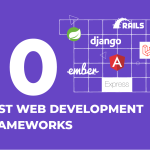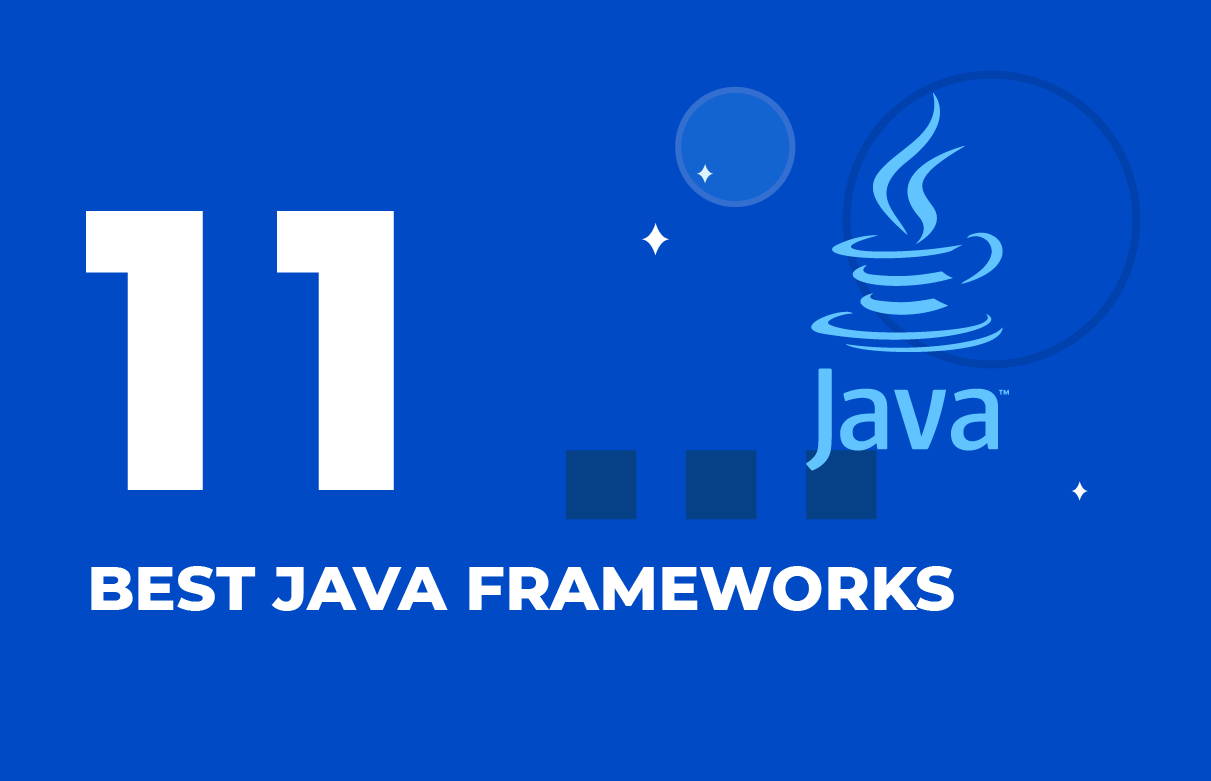No software development company can immediately tell you the cost of building a web application. Each project requires individual expense calculation since there are too many aspects to consider.
That’s why the aim of this article is not to disclose the exact price of any given web solution type. Instead, we’re going to provide you some insights into the key three price ranges, major cost-determining factors, as well as the ways of controlling the budget of your web app development project.
Achieve digital transformation with software engineering services delivered by SaM Solutions’ seasoned engineers.
Average Cost of Web Application Development
The cost of a software product is determined by the time and material resources invested in its creation. While the development process for any app involves similar stages, the duration of each stage can vary considerably.
- Discovery stage – encompasses activities such as market research, competitive analysis, business planning, and documentation. A trustworthy development company will thoroughly assess your business and app goals, defining clear requirements and creating a detailed project roadmap. The completion of this phase may roughly demand from 20 to 200 hours.
- Design stage – involves software prototyping and UX/UI design and may last anywhere from a few weeks to several months.
- Development stage – includes the actual coding, database creation, server setup, third-party integrations, QA and testing, etc., thus translating the design and specifications into a real-life, fully-featured product. This phase may range from a few months to a year or more.
- Deployment stage – aims at making the application accessible to users, ensuring that all components work effortlessly in a live environment. For simpler projects, deployment can take a few hours to a day, while more complex applications may require several days or even weeks for thorough testing and optimization before being released to users.
So, how much does a web app cost? Alas, there’s no precise answer. We can only break down the web development price range into three categories, depending on the app’s complexity:
| Type | Estimated Cost | Time |
| Simple Web Apps | $10K – $60K | 1–3 months |
| Medium Complexity Web Apps | $60K – $150K | 3–6 months |
| Complex Web Apps | $200K+ | 9+ months |
Simple Web Applications ($10K – $60K)
This category includes simple web solutions with standard user interface elements that can be developed on a single platform using pre-built templates or requiring minimal custom coding. Such apps typically have few features and can function without a database. The relatively straightforward development process can take 1–3 months.
Weather apps, calculators, audio/video players, landing pages, and blogs are all good examples of low-cost web development projects.
Medium Complexity Web Applications ($60K – $150K)
Web apps of medium complexity require a significant amount of coding, as they often include a customized user interface, authentication, data storage, API integrations, push notification, GPS access, real-time data processing, billing functionality, and more. Therefore, mid-level apps demand a higher level of development skills and expertise, as well as more time and resources compared to simple web apps. Their development can last for 3–6 months.
The examples of medium complexity apps are eCommerce websites, booking systems, delivery apps, video conferencing tools, and job search platforms, to name a few.
Complex Web Applications ($200K+)
This category covers large-scale, complex web products designed to streamline business processes, automate workflows, and provide advanced functionality for extensive user groups. Combining customized user interfaces with a multitude of specific features, such applications operate relying on nonlinear workflows and intricate database logic. The development typically lasts for over 9 months, involving a sizable team of seasoned experts and substantial resources.
Some examples of high-cost apps include enterprise resource planning (ERP) systems, healthcare apps, online marketplaces, banking systems, SaaS products, social networks, and gaming apps.
As you can see, project complexity is one of the determining factors for the final project cost.
Essentially, the more ambitious the project, the more expensive it becomes. A basic web app with limited features will require less time and effort to develop, and will thus be more affordable. Once you expand the scope of work, for example by adding custom integrations, designing dynamic user interfaces, or introducing advanced features like AR/VR, AI/ML, the overall cost soars.
Other Factors Impacting Web App Development Costs
It’s important to note that the cost ranges mentioned above are only for general reference. The actual expenses of creating a web application also depend on some other factors.
Team composition and expertise
The number of experts in your development team, their tech skills, and the country of residence have a major impact on the cost of your web app.
- Experience: Junior developers generally command lower rates than their senior counterparts. Individuals with expertise in widely-used technologies such as .NET or Java are more readily available in the job market. On the other hand, those possessing skills in artificial intelligence or legacy technologies may be less common and consequently charge higher fees for their services.
- Size: Quite naturally, the bigger the team – the higher the costs. However, if your project is of a large-scale, hiring a bigger team and finishing faster will be more cost-effective than working with a small team for over a year.
Naturally, the larger the team, the higher the associated costs. However, in the case of a large-scale project, opting for a bigger team and completing the work more expeditiously can often prove to be more cost-effective than engaging a smaller team for an extended period of time. - Location: Businesses have the option to select from onshore, nearshore, and offshore software development, considering that the hourly rates of skilled developers differ significantly across countries. However, it’s crucial to emphasize that a higher price does not necessarily equate to higher quality. The determining factors include legal and regulatory requirements, communication costs, and average living standards in various regions.
Programmers’ hourly rates across regions
| Region | Junior Developer Rate | Senior Developer Rate |
| North America | $30 – $50 | $60 – $120 |
| Western Europe | $25 – $45 | $50 – $100 |
| Eastern Europe | $15 – $30 | $35 – $70 |
| Latin America | $15 – $30 | $30 – $60 |
| Asia Pacific | $15 – $35 | $30 – $60 |
| Africa | $10 – $25 | $20 – $50 |
Design requirements
Developing a sophisticated UI featuring custom graphics, animations, and other advanced design elements for your web app inevitably extends the development timeline. Additionally, it necessitates collaboration with skilled designers alongside software engineers. The more visually striking you aspire your web design to be, the greater the time and effort investment, subsequently leading to increased costs.
Integration requirements
Small web apps frequently should operate within expansive ecosystems. The process of integrating an application with your internal business software, social media networks, or payment gateways is intricate and time-consuming. The more integrations you need, the costlier the project will be.
Platform compatibility
Various platforms and web browsers come with distinct technical specifications, features, and requirements. Guaranteeing platform compatibility necessitates extra testing, along with continuous maintenance and updates to ensure the web app stays in sync with new platforms and web browser versions. Consequently, the development cost of a web app may rise when considering platform compatibility.
Technology stack
Technology stack is the collection of programming languages, software frameworks (React Native, JavaScript, Flutter, Xamarin, etc.), and tools used to build apps. The choice of tech stack depends on the project specifications, the team’s expertise, and the web app type (progressive web apps, SPA, etc.).
Using a popular and widely supported technology stack can save time and money, as it’s easier to find experienced developers and pre-built components. At the same time, using newer or more niche technologies can lead to higher development costs, as they may require unique expertise.
Develop your software with SaM Solutions’ engineers, skilled in the latest tech and well-versed in a wide range of industries.
Infrastructure
Infrastructure refers to hardware and software elements including servers, storage, databases, and networking components. They are needed for hosting a web app, and their scale is determined by the app’s size, traffic volume, and security requirements.
Opting for a cloud-based infrastructure, such as Amazon Web Services or Microsoft Azure, can provide greater scalability and cost-effectiveness, as the provider is responsible for the management. However, using a private or hybrid infrastructure can offer greater security and control at a higher cost.
Security requirements
If your web app deals with sensitive data – for instance, clients’ addresses or financial information – you will need to ensure a high level of security in your application. However, doing that implies hiring data security experts, who will work on developing and rigorously testing your solution.
Testing and quality assurance
Ensuring that your web application aligns with the desired quality standards necessitates testing various aspects, a factor that can influence the overall cost. An apparent reason for this is the requirement for proficient QA specialists to conduct the testing process. Moreover, the diverse types of testing – functional, usability, security, or performance – demand time and specific tools for thorough evaluation.
How to Control Web App Development Costs
Some strategies can help you keep web app development costs under control and stay within budget.
Prioritize features and functionality
Instead of trying to build everything at once, focus on the most critical features and create a minimum viable product (MVP). An MVP includes only the most essential features that the web app needs to function, and it can be used to get feedback from users and validate the product idea before investing more resources.
Leverage Agile methodology
Agile methodology emphasizes collaboration and adaptability as well as the possibility to iterate web app development and roll out one feature at a time. This helps to control costs by allowing for changes and adjustments throughout the process.
Choose the right technology stack
Tech tools selected carefully with your team, project, and business requirements in mind can help you reduce the time and effort needed to build a web solution. Here are some ways how the right tech stack slashes costs:
- Efficient development. Opting for technologies familiar to the development team can markedly reduce the development timeline, subsequently lowering the overall project cost. Furthermore, leveraging tools with built-in libraries and components expedites the process, minimizing the need for extensive custom code.
- Scalability. Selecting a technology stack that is flexible and able to scale with your business, you prevent costly rebuilds or system overhauls down the road. What is more, you can avoid the necessity to switch to a new tech stack or platform.
- Community support. Employing technologies with robust and supportive communities can prove advantageous in reducing development costs. Such communities offer valuable resources, libraries, and open-source tools, contributing to the cost-effective and swift development of custom solutions.
- Cost-effective licensing. Picking frameworks that have cost-effective licensing has a positive impact on your budget. For instance, free open-source web development frameworks like Laravel or Ruby on Rails can help you save a significant amount of money on licensing fees compared to charged frameworks.
In general, it’s important to work closely with your development team to evaluate the available technologies and select options that meet your business needs while remaining within budget.
Reuse existing code
Reusing existing code from other projects or open-source libraries can help you control costs by reducing the amount of code that needs to be developed from scratch. You can also achieve this by turning to an experienced vendor, since they often have ready-made components which they can reuse for your project.
Use cloud services
Instead of making costly investments in on-premise hardware, you can reduce your web app project costs by using cloud services. Although Amazon Web Services, Microsoft Azure, and other cloud service providers do also imply subscription expenses, these are still much more cost-effective options compared to setting up and continuously maintaining an infrastructure of your own.
Introduce regular testing early on in the project
Any bug becomes more expensive to fix when it already has created hundreds of interdependencies in the web app code. By testing early and frequently, your development team can pinpoint and solve any code issues early in the development process, which will help avoid costly mistakes and delays later in the project.
Outsource your development
Outsourcing web app development to a reputable development firm can effectively manage costs by diminishing the reliance on in-house resources and expertise. Various software providers are accessible, each with distinct pricing structures, expertise, methodologies, and processes.
To choose a software development company, research and compare various vendors who provide the necessary services at a reasonable price. Look for a development team that has experience in your industry, has worked on similar projects, and has a portfolio that showcases their capabilities. Feel free to clearly communicate your budget constraints to be on the same page with your partners.
By implementing these strategies, it is possible to control web app development costs while still delivering a high-quality product that meets user needs.
Rely on SaM Solutions as Your Web Development Company
At SaM Solutions, we prioritize close collaboration with clients to understand their business needs and determine the optimal web development strategy aligning with the budget.
Our team comprises highly skilled developers, architects, designers, QA engineers, DevOps specialists, and project managers who work together to deliver top-notch web solutions. Following industry best practices, using agile methodologies, and leveraging a variety of web technologies (React, Java, .NET, PHP), they ensure timely delivery, impeccable quality, and customer satisfaction.
SaM Solutions is a reputable web development provider that has been in the industry for over 30 years. We have a proven track record of delivering high-quality software solutions, including web, desktop, IoT, and mobile apps, to small and large companies worldwide.



























 5 Reasons Why Your Business Needs a Mobile eCommerce Application
5 Reasons Why Your Business Needs a Mobile eCommerce Application Using Salesforce to Improve Your Sales Pipeline: Five Tips
Using Salesforce to Improve Your Sales Pipeline: Five Tips Cross-Platform Mobile Development: Five Best Frameworks
Cross-Platform Mobile Development: Five Best Frameworks How to Develop Custom Accounting Software
How to Develop Custom Accounting Software 10 Best Web Development Frameworks in 2024
10 Best Web Development Frameworks in 2024












 Top 30 Ecommerce Tools to Elevate Your Business in 2024
Top 30 Ecommerce Tools to Elevate Your Business in 2024 5 Best Tools to Improve Embedded Software Testing
5 Best Tools to Improve Embedded Software Testing Why React and Node.js Are the Top Technologies for Creating High-Performance Web Apps in 2024
Why React and Node.js Are the Top Technologies for Creating High-Performance Web Apps in 2024 10 Best IoT Platforms for 2024
10 Best IoT Platforms for 2024